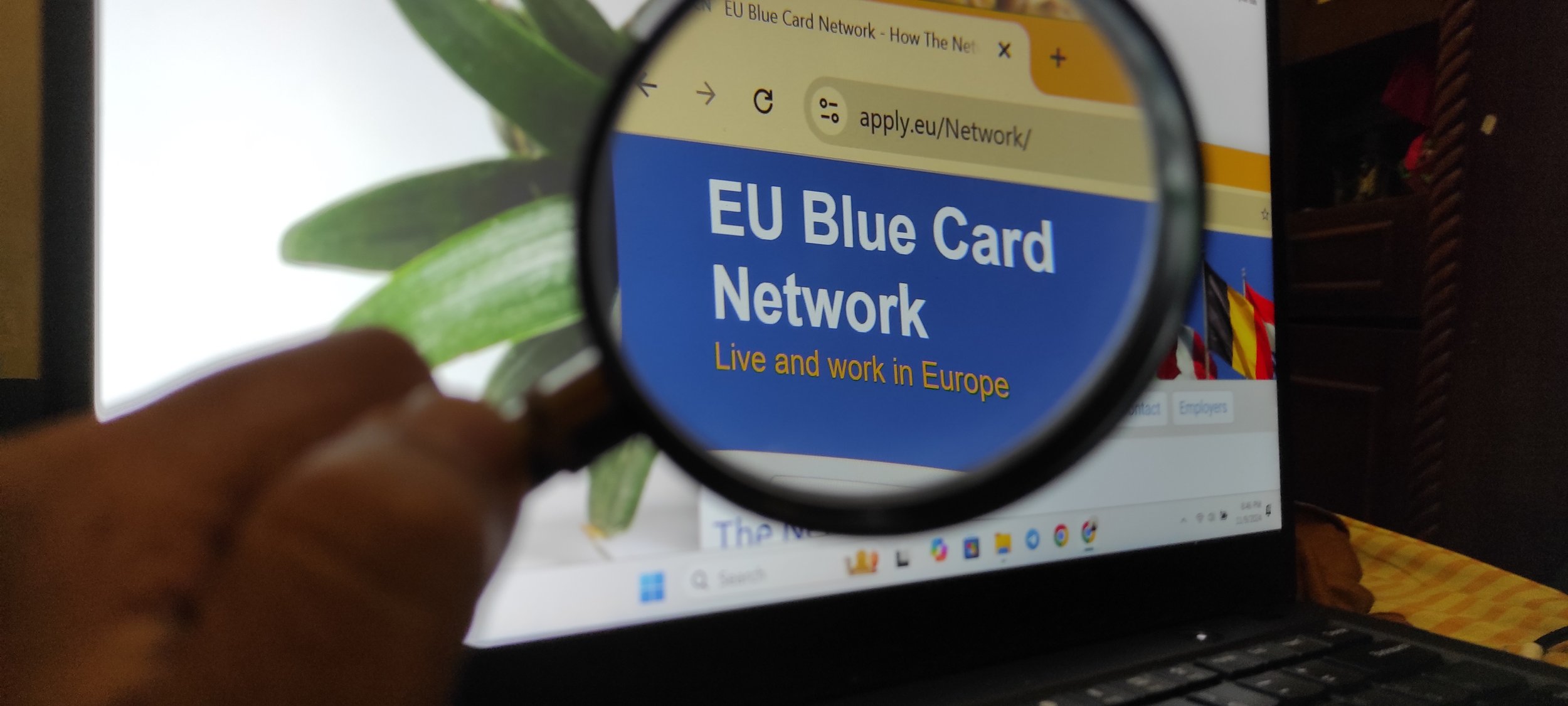EU Blue Card Netherlands: 2025 Requirements & Comparison to HSM Permit
4:29
The EU Blue Card is a combined residence and work permit for highly qualified non EU/EEA nationals. It enables employment in the Netherlands with additional benefits such as facilitated mobility within the EU for Blue Card holders. The requirements for and benefits of the EU Blue Card have been updated in 2024, which has made the permit an attractive option for international newcomers and highly skilled migrants already living in the Netherlands.
To qualify for the permit, the employee and employer must meet the following key requirements:
Higher education or experience
A diploma from a higher education programme of at least 3 years, or
At least 5 years of relevant work experience at higher education level (for certain ICT roles: 3 years within the 7 years prior to application).
Employment contract
Minimum contract length: 6 months.
Salary thresholds (2025)
Standard EU Blue Card salary (gross per month, excl. 8% holiday allowance): €5,688.
Reduced EU Blue Card salary: €4,551 (available to recent graduates under specified conditions).
Sponsor status
Recognition as sponsor by the IND is not required for an EU Blue Card application (unlike the Highly Skilled Migrant route). Recognised sponsors do benefit from faster processing (see below).
Other requirements
The employer must carry out economic activity and has no relevant labour law fines in the past 5 years.
Any regulated professions (e.g., in healthcare) must meet Dutch licensing/registration rules.
Once an EU Blue Card application is submitted, the time the Immigration and Naturalisation Service (IND) takes to reach a decision depends on the status of the employer. For applications submitted by a recognised sponsor – which is optional for this permit – the decision period is 30 days. In all other cases, the IND may take up to 90 days to process the application.
The application for an EU Blue Card is subject to a government fee, which is currently €405 (2025 amount).
If the application is approved, the EU Blue Card is issued for the duration of the employment contract plus an additional three months, with a maximum validity period of five years. For example, if the employment contract is valid for two years, the EU Blue Card will be valid for two years and three months. Highly Skilled Migrant permits in contrast are only issued for the duration of the employment contract, without the additional 3 months.
If the employment relationship ends, EU Blue Card holders who lose their job are allowed a search period to find new employment in the Netherlands or in another EU country. This period is generally three months, but can be extended to six months if the individual has already held an EU Blue Card for at least two years. The search period can never extend beyond the original expiry date of the card.
Below the main differences between the EU Blue Card and the Highly Skilled Migrant permit are compared
|
Type of permit |
EU Blue Card |
Highly Skilled Migrant (HSM) |
|
Recognised sponsor required? |
No (optional; speeds processing) |
Yes |
|
Minimum contract |
6 months |
No statutory minimum |
|
Salary (2025) |
Standard: €5,688 Recent higher education graduates: €4,551* |
30 and older: €5,688; Under 30: €4,171; Recent higher education graduates: €2,989* |
|
EU mobility |
Facilitated long‑term mobility after 12 months |
Not an EU instrument—no Blue Card mobility |
|
Decision time |
30 days (recognised sponsor) / 90 days (others) |
IND seeks to decide 2 on the application within 2 weeks |
Figures and rules per 1-1-2025
* Conditions apply –Contact us for more information
At Exterus, we help employers determine the best route (EU Blue Card vs. HSM or other), confirm eligibility, calculate compliant salaries, and prepare a complete application. If you’re not a recognised sponsor, we’ll also advise on whether sponsor recognition is beneficial for your hiring pipeline.
Please contact us for more information.


Discover the 2026 Dutch highly skilled migrant salary thresholds, how annual indexation affects applications, extensions, and employer changes.

Discover the new salary thresholds for highly skilled migrants and Blue Card holders in 2026 and explore future policy changes affecting migration to the Netherlands.

Discover how the reduced salary threshold for Highly Skilled Migrants in the Netherlands benefits both employers and recent graduates. Learn eligibility criteria and key considerations.

Discover the new salary thresholds for highly skilled migrants and Blue Card holders in 2026 and explore future policy changes affecting migration to the Netherlands.

Discover the GVVA single permit in the Netherlands. Learn the hurdles, exemptions, and faster alternatives for hiring non-EU talent.

Navigating the complexities of becoming a highly skilled migrant can be challenging, but understanding the requirements is the first step.

Avoid costly fines when hiring non-EU students in the Netherlands. This guide covers work permits, working hour limits, and administrative duties for employers.

Hiring non-EU talent as a non-profit in the Netherlands? Learn the pros, cons & criteria of key permits like the Highly Skilled Migrant, GVVA & EU Blue Card. Find out which fits your organization best and get expert help to simplify the process!

Looking to hire top global talent fast? Learn how your Dutch startup can hire highly skilled migrants using an Employer of Record—skip the red tape, stay compliant, and scale smarter. Discover the benefits and process in our guide.

Discover the ins and outs of holiday allowance in the Netherlands, including how it’s calculated, when it’s paid, and why it’s an essential perk for employees in the Netherlands.

The Netherlands has relaxed EU Blue Card requirements, offering better job security, lower salary thresholds, and new IT professional benefits. Find out how you can qualify!
Subscribe to our newsletter and stay ahead with the latest insights and developments in global employment mobility, delivered straight to your inbox.
By subscribing you agree to with our Privacy Statement